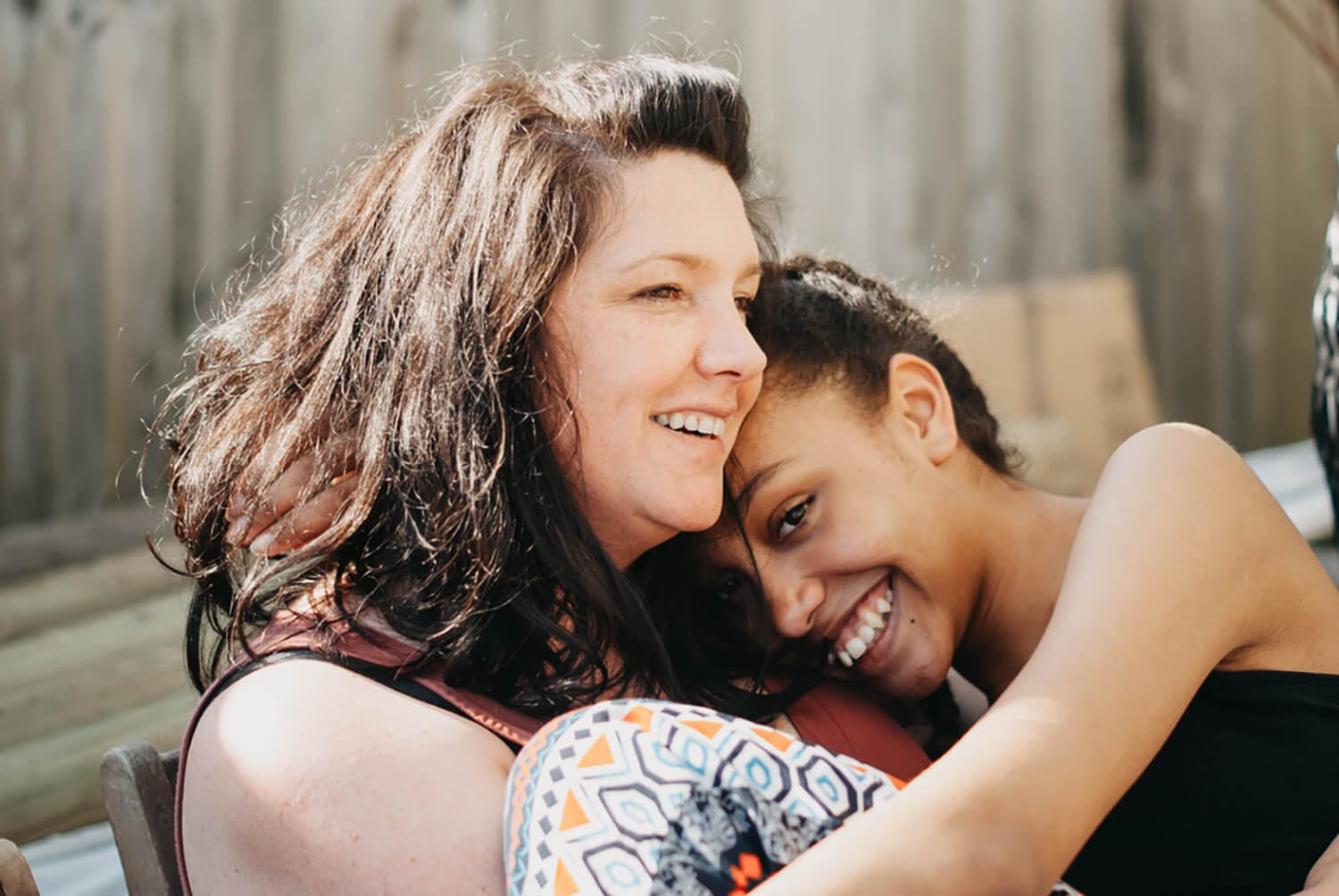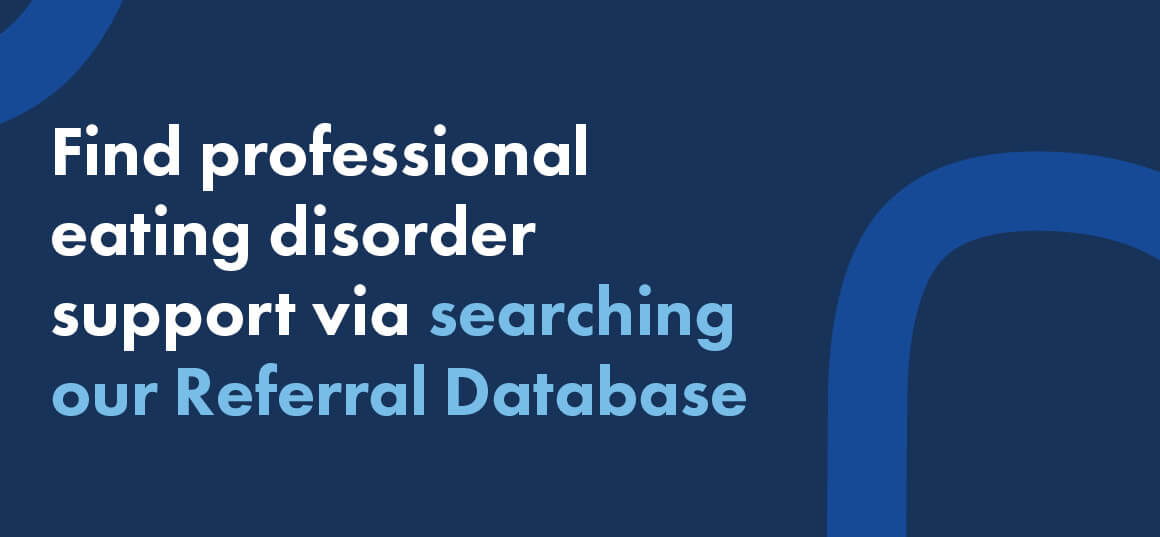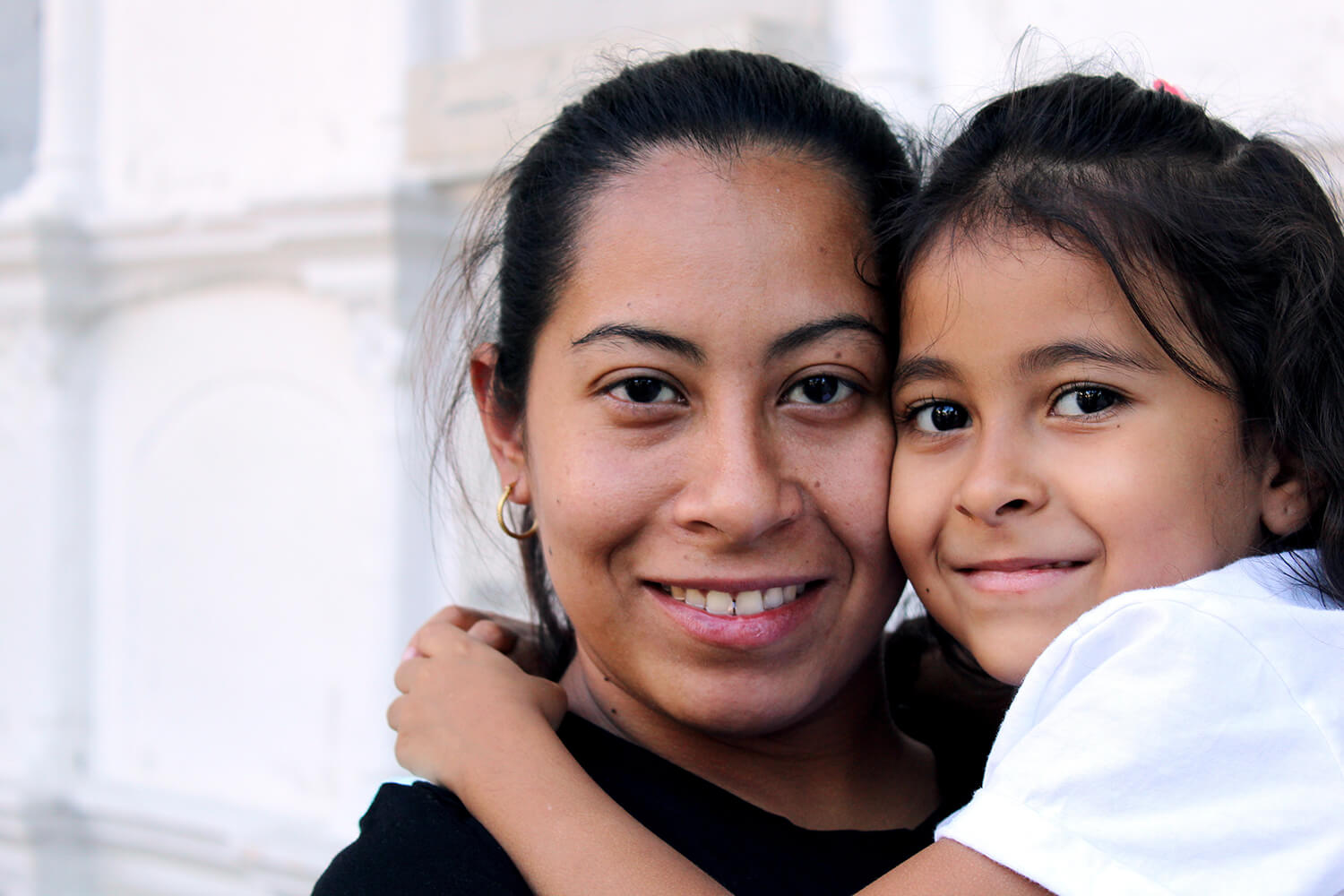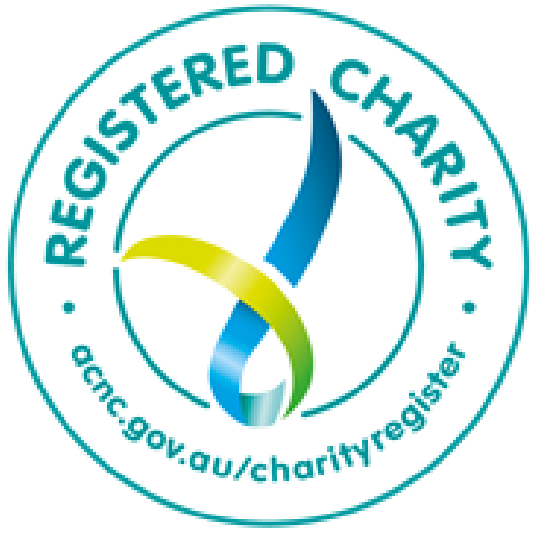Eating disorders and autism: More common than you think
The relationship between autism and eating disorders is not well known but the two quite often go hand in hand. In fact, the connection is so common that many clinicians recommend that people diagnosed with an eating disorder should probably be screened for autism too. “Somewhere between 30 and 35 per cent of individuals with eating disorders may also be autistic,” says clinical psychologist, Amy Talbot, “but it’s likely they weren’t diagnosed prior to the eating disorder.”
PhD candidate, Laurence Cobbaert, knew she had an eating disorder, but her autism diagnosis came much later. After that, everything fell into place. “I retrospectively analysed my entire existence. And I was like, yeah, this makes sense. This is it. This is me”. Laurence says this new understanding was like a rebirth for her, a huge moment that inspired her doctoral research.
Many clinicians are working hard to help improve services available to autistic people living with eating disorders, because the aetiology of the eating disorder, and therefore the treatment approach, needs to take the autism into account.
At least awareness is growing and is much better today than carer Sue Bloom remembers. Her daughter lived with an eating disorder for decades before receiving understanding and the right kind of help. At first doctors dismissed Sue’s concerns about her child’s increasingly particular food choices. “She’s just a picky eater”, they said, but Sue had a strong sense there was more to it than that.
Learn more about Peace Pathway
Learn more about the Talbot Centre
Clinicians with understanding of EDs and autism – join our database
Search Butterfly’s Referral Database
NEURODIVERGENCE AND EATING DISORDERS – BY LAURENCE COBBAERT
Amy Talbot 00:05
Autistic people are more at risk for developing eating disorders.
Laurence Cobbaert 00:10
When when I was a child, I just felt like I didn’t belong anywhere. I felt very different but without really understanding why.
Amy Talbot 00:19
You can’t assume that if someone is presenting with an eating disorder, and they haven’t had a diagnosis prior to that, that they’re not an autistic person. And so, we really should be screening for autism within the eating disorder populations.
Laurence Cobbaert 00:35
And so I grew up feeling that something was inherently broken with me, you know? I just wasn’t normal as such.
Sue Bloom 00:44
She thought she just had an eating disorder but then it transpired that her sensitivities were more akin to Asperger’s, such as visual disturbances, extra sensitivity to sounds and smells, aversions to certain colours.
Sam Ikin 01:04
Autism is a condition that affects how a person thinks, feels, interacts with others and experiences the environment and the world around them. About one in 70 people in Australia are on the autism spectrum. We also know that autistic people are especially susceptible to eating disorders.
Amy Talbot 01:22
So somewhere up to 30 to 35% of individuals with eating disorders may actually also be autistic but it’s likely to have not been diagnosed prior to the onset of the eating disorder.
Sam Ikin 01:36
This is Butterfly: Let’s Talk, a podcast from Butterfly, Australia’s voice for eating disorders and body image issues. In this episode, we’re going to examine a little known, but surprisingly common relationship between autism and eating disorders, two diagnoses that are among the most stigmatised and poorly understood in modern society.
Amy Talbot 01:59
Many autistic individuals do have special passions or interests that they’re very focused on and if they happen to be interested in something that’s related to diet culture, then becoming really interested and passionate and focused on those things can result in you know, unhelpful eating behaviours. They want to be more part of that community or more part of that culture as part of that special interest. My name is Dr. Amy Talbot, or just Amy as I prefer to be referred to. And I am a clinical psychologist, who is the director and founder of the Talbot Centre, a multidisciplinary service in Sydney’s Northwest.
Sam Ikin 02:41
For some people eating disorders may originate from their predisposition to repetitive behaviours, or from their intense interests, such as calorie counting exercise, or a particular diet. I think we all have a very rough idea of what autism is but we also know that it’s deeply misunderstood by a huge chunk of the population. So I asked Dr. Talbot to define it for us.
Amy Talbot 03:05
So you know, that question is really interesting, because it depends on the lens at which you want to view the question through. From a purely medical perspective, the medical profession looks at autism as a diagnosis from the Diagnostic and Statistical Manual based on a presentation of a series of traits or deficits. Whereas there has been a big focus recently on neuro diverse affirming practice. And the neuro diverse affirming perspective, which really sees autism as a form of neurodiversity. And neuro diversity is the idea that there are neurological differences between people that are just normal natural genetic variations. And so instead of autism being deficits, or a disorder, it’s actually seen as a variation or non-neurotypical kind of variation that’s naturally occurring. And that the symptoms or behaviours that an autistic individual might experience are just differences rather than defects.
Sam Ikin 04:15
That’s pretty good way to put it. I know a guy who calls it his great possibilities.
Amy Talbot 04:19
Yeah, awesome.
Sam Ikin 04:21
He doesn’t see it as something that’s holding him back. It’s something that allows him to look at things differently to everyone else.
Amy Talbot 04:26
Absolutely. And I think that’s the great thing about the neurodiverse affirming perspective is that it does see the potential strengths and a capacity of individual autistic individuals rather than seeing everything that they experience as being disordered or needing to be corrected.
Sam Ikin 04:43
So why are autistic people particularly at risk of developing eating disorders?
Amy Talbot 04:48
Somewhere up to 30 to 35% of individuals with eating disorders may actually also be autistic, but it’s likely to have not been diagnosed prior to the onset of the eating disorder. And so there’s a couple of different things that make autistic individuals more at risk for developing eating disorders. The first one is a potential common neurobiology. There’s been some research looking at behavioural patterns or personality traits or cognitive processing styles that have been found to be consistent between individuals with eating disorders, particularly anorexia nervosa, where most of the research has been done, and autistic individuals. These sorts of cognitive processing styles may include things like something called weak central coherence, which is a very strong orientation towards details and systems at the expense of kind of seeing the big picture. So some people are more inclined to be big picture people, some people are more inclined to be detail oriented people and autistic individuals and those with anorexia nervosa tend to lean more towards detail orientation.
Sam Ikin 05:56
Here’s some stats from the scientists for you. About 1% of people are autistic and about 0.3% have anorexia. But when you flip it around 20% of people with anorexia nervosa are autistic. And all the other eating disorder diagnoses fall into the other 10 to 15%. Children as young as seven with social difficulties, are more likely to use disordered eating behaviours by the time they’re around 14.
Laurence Cobbaert 06:22
Well, when I was a child, I just felt like I didn’t belong anywhere. I felt very different. My name is Lawrence Cobbaert. I’m originally from Belgium. I’ve been living in Australia for about six years. I moved to Sydney about a month ago in order to do PhD at the University of New South Wales. I am within the Department of Psychiatry, and I’m investigating the connections between autism and eating disorders at the moment.
Sam Ikin 06:45
And since Lawrence has a lived experience, she’s using her own experience as a patient and someone suffering from eating disorders to guide her work as a PhD candidate.
Laurence Cobbaert 06:56
I just wasn’t normal as such. And so eventually, I mean, a funny anecdote: I went on a date with a guy at some point, and he was autistic and I didn’t know I was as well. And so the night went fine. And then he said, “I’m so glad I met somebody like you.” And I was like, “Why do you say that?” It’s like, “Well, you’re on the spectrum just like me.” And I said, “No, that cannot be,” because, in my mind, autism was associated with lots of stigma and stereotypes, such as we lack empathy, which is absolutely untrue. There is research showing that autistic people have hyper empathy, which is totally the opposite. And so all those misconceptions, they made me very doubtful about me being autistic in the first place, because I felt I had empathy, I could make eye contact and friends, so no, this is not possible. Eventually, when my eating disorder got to the point where I needed to be hospitalised, I started seeing a mental health professional. And during that journey, at some point, I started investigating the fact that I might be autistic.
Sam Ikin 07:59
A common trait among autistic people is difficulty recognising and responding to internal body states and sensations. This means they might have trouble recognising when they’re hungry or full. Around 70% of autistic children have issues around food and eating an autism is often diagnosed before the eating disorder. But for Lawrence, it was the other way around.
Laurence Cobbaert 08:21
I retrospectively analysed my entire existence. And I was like, “Yeah, this makes sense. This is it. This is me.” And everything just fell into place. And it was so beautiful. It was overwhelming, a sense of like rebirth to a certain degree. I didn’t feel like I was broken anymore. I just felt like I was me. I was different. And there’s nothing wrong with that.
Sam Ikin 08:44
How did you know that you had an eating disorder in the first place? When was that?
Laurence Cobbaert 08:48
It’s really hard to say when the disordered eating became clinical eating disorder because it’s just a bumpy road. And I guess I had a conflictual relationship with my body image and my eating and food in general for as long as I can remember. I guess it got really bad when I was a teenager, which is often when things get wrong. I mean, with regards to people having eating disorders. But it never got to the point where I needed to be hospitalised until 2017. That’s about five years ago. And that’s when I needed to be in hospital for medical issues related to my eating disorder because it had gotten out of control.
Sam Ikin 09:28
ARFID and anorexia nervosa are the two eating disorders more commonly experienced by autistic people. ARFID stands for Avoidant Restrictive Food Intake Disorder. It’s often described as extreme picky eating. It involves food avoidance, but it doesn’t include a focus on weight and body image, which is more often experienced by neurotypical people with eating disorders. It’s much less so in the autistic population.
Amy Talbot 09:52
A couple of other things that may lead autistic individuals to be more at risk for developing eating disorders include increased sensory integration difficulties and gastrointestinal difficulties for autistic individuals. There are a range of other pathways through which an autistic individual may develop an eating disorder. This can include, as we said, some of the risk factors. So the cognitive processing patterns, the sensory difficulties, a need for control or routine. But it can also include things like challenges around practical skills related to cooking and shopping for food, exercise as a method of stimulation, or becoming really fixated with eating disorder related topics being a special interest.
Sam Ikin 10:39
The sensory integration difficulties that Dr. Talbot is talking about are when the brain has trouble receiving and responding to information that comes in through the senses.
Amy Talbot 10:49
Eating is an intensely sensory experience, you’re seeing the food, you’re smelling the food, you’re tasting the food, touching the food, hearing the food. And so if you’re having any challenges with any of those sensory inputs, then eating becomes an increasingly difficult to task.
Sue Bloom 11:06
I think the most helpful thing for the carer to know – and to reinforce with the person who has the disorder – is they can take control back whenever they make the decision.
Sam Ikin 11:19
Well, someone who’s been there seen it and done it all is Sue. She’s been caring for her daughter, Lisa, who’s both autistic and struggling with an eating disorder for more than three decades.
Sue Bloom 11:31
As long as they allow the eating disorder to have control, it will have control, but they have the power to take the control back. And they need to know that. Nobody else can take the control away from the eating disorder except them. And when they decide that they want control of their life back, they have the power to take it. And that’s an all important point.
Sam Ikin 11:58
We’ve talked a lot in this series about how the system still has a long way to go in terms of serving people suffering from eating disorders. But we also acknowledge that it’s come a long way in the past five to ten years.
Sue Bloom 12:09
She thought she just had an eating disorder. But then it transpired that her sensitivities were more akin to Asperger’s, such as visual disturbances, extra sensitivity to sounds and smells and aversions to certain colours.
Sam Ikin 12:30
Asperger’s is a form of autism where people have trouble relating to others socially, their behaviour and thinking patterns can be rigid or repetitive.
Sue Bloom 12:38
From a very young age, we couldn’t go in chain stores in the perfume section because it was overwhelming for her. That wasn’t part of the eating disorder, so we then looked into autism and she was assessed as having Asperger’s. When she was younger, when the other kids were eating ice cream, she used to eat frozen peas as a treat. She had specific likes when she was very young, she would eat things like chicken rolls and as she got older, she didn’t want anything that had, well that was meat, fish, eggs or dairy. So she became more picky and selective as she got older. But when you rule out those food groups, what’s left is a very small choice. And then the Asperger’s took out all the red foods and anything that had strong flavour. So then the choice became smaller, until the choice was really just lettuce and celery.
Sam Ikin 13:40
Sue’s experience trying to find the right treatment for Lisa 30 years ago was frustrating to say the least.
Sue Bloom 13:46
The doctor said “No child will willingly starve themselves. You’re an overprotective mother.” Another doctor said “She’s just a picky eater. You’re overreacting. You’re being overprotective.” So I had many years of being considered a helicopter mom. And I couldn’t be heard because I was dismissed every time. She would eat bread and then drink lots and lots of water to swell with bread up. Her weight went up, but her behaviours did not. Obviously she had malnutrition, her brains function went down and at that point she was diagnosed with an eating disorder.
Sam Ikin 14:25
I’m sorry that you went through all that. So that must have been incredibly difficult not just for yourself, but for the whole family.
Sue Bloom 14:31
I’m sorry that she went through all that. Watching somebody suffer, and not being able to do anything about it because it’s in their control, is totally overwhelming. But that’s what the eating disorder wants; total control.
Sam Ikin 14:46
What we’re finding out through this episode is that autism and eating disorders don’t just happen to co occur. In fact, they can feed off each other. Another common autism trait is having difficulty identifying and describing emotions. This can make self-soothing or getting support really difficult. And people can develop eating disorders as a coping mechanism.
Sue Bloom 15:07
They both intersect with each other because characteristics of both marry very well together and reinforce each other.
Sam Ikin 15:16
For Lawrence, the link didn’t make as much sense initially, until she started doing a bit of her own research.
Laurence Cobbaert 15:23
I found out later when I analysed and investigated the connections. And I feel that eating disorders in autism are connected at the point of sensory perception. What happens in autism is that autistic people have a dysregulated sensory perception, whether it’s interoception, or extra reception, and then it can be extremely confusing, because you don’t know if you’re feeling an emotion, or you’re feeling something from inside your body or you’re feeling something from outside your body. And I think that that’s why autistic people are extremely vulnerable to eating disorders is because we can’t regulate emotion space on our sensory perception, and we can’t regulate our behaviours, especially with eating because we don’t know when we’re hungry. We’re not necessarily sure if it’s an emotion or a feeling, it feels like a loss of control, and then you don’t know who you are really based on what your body’s telling you when you cannot rely on it. So the only way to survive in that like extremely confusing sensory processing environment is to have as much control as possible over what you can control. And eating is one of those.
Sam Ikin 16:32
And when it comes to treatment and clinical care, it’s clear that a one size fits all approach just isn’t going to cut it. People with both diagnoses tend to have worse outcomes than their non autistic peers. This is due in part to care protocols that don’t accommodate autistic people’s lived experience, or needs, or that focus heavily on weight and body image as contributing factors. I asked Dr. Talbot to tell us a little bit more about this.
And so what do the health professionals need to know about the population of autistic people to help them get the right diagnosis or to be able to treat them properly knowing that they’re coming from a different place?
Amy Talbot 17:11
I think this is a really good question. I think that health professionals need to start off by being really aware of the high comorbidity of autistic people developing eating disorders. So having that really good understanding of the overlap between autism and eating disorders, and being able to make appropriate adjustments, so that individuals can still see the elements of the autism as strengths but make changes to their eating disorder behaviours. Research suggests that autistic individuals will likely present for eating disorder care first, prior to having any formal diagnosis or identification of autism. And therefore, you can’t assume that if someone is presenting with an eating disorder, and they haven’t had a diagnosis prior to that, that they’re not an autistic person. And so we really should be screening for autism within the eating disorder populations, because we know that autistic individuals have these different pathways of development of eating disorders. And they also have poor response to traditional eating disorder treatments. So facilitating better identification, and better self-understanding and awareness for the individual having their own experience, who they are and why they experience things in particular ways, is really important for professionals.
Sam Ikin 18:36
Something a lot of people are asked to do, whether they’re autistic or not, is to change particular parts of their personality. Butterfly suggests that people seeking recovery from eating disorders should work as part of a team. So, you’ve got your psychologist, your doctor, your other healthcare providers, however, having carers, families and friends is also an extremely important part of the jigsaw puzzle. So, what should carers be aware of? And is it possible for a carer to be able to protect a loved one from an eating disorder? Sue has some pretty simple advice:
Sue Bloom 19:08
Take their lead. So for example, if she says, “I am feeling afraid of red food.” As a carer you can’t say, “Don’t be afraid of red food, there’s no logical reason for that.” You have to say things like, “What is it about red food that bothers you? Do you know where that came from? Have you any idea when that started?” And you know, if there are some red foods that are less scary than others, things like that, that actually allow her to take the lead on trying to unpick where the behaviours have come from. Because you can’t tell someone not to feel a certain way. They’re still gonna feel it.
Sam Ikin 19:52
So I’ve spoken at length about my eating disorder, particularly my experience with people coming from a very loving place, but always with one version or another of “Why don’t you just stop?” Of course, that’s extremely unhelpful.
Amy Talbot 20:05
I think there are some things that carers could keep in mind in terms of limiting the risk factors for a loved one from developing an eating disorder. I think the first thing is to be a really strong, supportive advocate for your loved one. Not all clinicians are experienced in working with autistic individuals and they may not be making appropriate adjustments to intervention. And so I think supporting your loved one to advocate for themselves or advocating for your loved one, to have autism considered and be a meaningful part of the conversation around what treatment looks like, is really important. There are elements of the eating disorder, that are exacerbated by features of autism, things like strong adherence to rules and structures and routines. This is part of the eating disorder, but it’s also likely to be part of autism. And so being able to gently work with the young person to tease some of those things apart and help them to change the things that are disordered and part of the eating disorder. But finding their strengths in the context of autism is a really important journey for carers as well.
Sam Ikin 21:21
For someone who has lived experience of both autism and eating disorders, I asked Lawrence what it was that helped her?
Laurence Cobbaert 21:29
Well, I found that that understanding better my sensory profile has helped me a lot, because tertiary perception has a big impact on cognition and emotional regulation. The way you sense perception, whether from your body or from environmental cues, is very important for your wellbeing and your mental health. Much more than anyone will tell you in the medical field at this time because they’re not necessarily aware of that. Also, understanding that there’s nothing inherently wrong with you. You’re not broken. You’re a normal person, and normal is overrated. If people try to make you normal, just be yourself.
Sam Ikin 22:07
What have you learned about how to look after yourself, knowing now that there’s these two diagnoses at play?
Laurence Cobbaert 22:14
Well, I have investigated my own sensory profile, because it’s different for everybody. I have a schedule in place where I put alarms on my phone, and I put Post It’s around my house, reminding me to drink, reminding me to eat at very specific times, and I pre-prepare the meals with a very specified amount of food, for example. Because I do not feel full my brain doesn’t send me the signal that “Hey, you need to stop eating now or you need to drink now.” I have put in place very strict guidelines to compensate for that dysregulation, within my brain. I think that knowledge is probably the best way forward and involving people with lived experience in the research itself and in the design of treatment approaches. And I think that has led to a very pronounced imbalances in power and unequal power dynamics. And I think that needs to change. Most of the research has been done by people without lived experience, and what has been missed is a subjective reality of people with lived experience. And so, a lot of what we think about eating disorders is actually wrong.
Sam Ikin 23:23
When it comes to autistic people, it’s vital that health professionals strive to take a person centred approach to eating disorder, prevention, diagnosis, and care, especially when we consider around 35% of people with eating disorders may also be autistic. But what about the patients? What about the individual who has autism? What advice do we have for them?
Amy Talbot 23:47
I do think self-advocacy is really important in this space, you know, being really clear with your treating team, about, you know, what your understanding is, of which parts of your experience are related to autism and which parts of your experience might be related to your eating disorder. Also having dialogue around that with your treating team to help tease those things apart so that you can make meaningful change in the areas that are eating disordered while being respectful of the underlying way that you process and experience the world as an autistic individual. I think part of that is the self-learning process that is really important. If individuals can learn about themselves, understand their identity, understand their relationship with the world and understand how challenges might be experienced differently or how they can utilise their strengths more effectively, then they may be less vulnerable to developing eating disorder symptoms in the context of that confusion and identity formation, which we know are risk factors in general for eating disorder development.
Sam Ikin 24:55
So where do you go for support? Amy recommends Peace Pathways. Peace stands for a pathway for eating disorders and autism developed from clinical experience. To find out more about it go to pacepathway.com. You’ll find a range of resources available for adapting eating disorder care for autistic people in a sensitive way. For support with autism itself Aspect Australia is a good resource. Go to autismspectrum.org.au. For support with ARFID, head to the Eating Disorders Families Australia website that’s edfa.org.au and look for the STRIVE ARFID support group. And for direct eating disorder or body image support, there’s always the Butterfly Helpline, 1 800 33 4673 or 1800 E D HOPE. If you prefer letters. You can also chat online. Massive thanks to our guests in this episode Laurence, Sue and Dr. Amy Talbot. Butterfly: Let’s Talk is an Ikin Media production for Butterfly Foundation. It’s produced by Camilla Becket with lived experience support from Kate Mulray. The host, that’s me, is Sam Ikin. Our production assistant is Bronwyn Lisson. Editing and sound engineering is done by Brendon Lenehan. And to find out more about us go to ikinmedia.au I’m Sam Ikin. Thank you so much for your company.




















